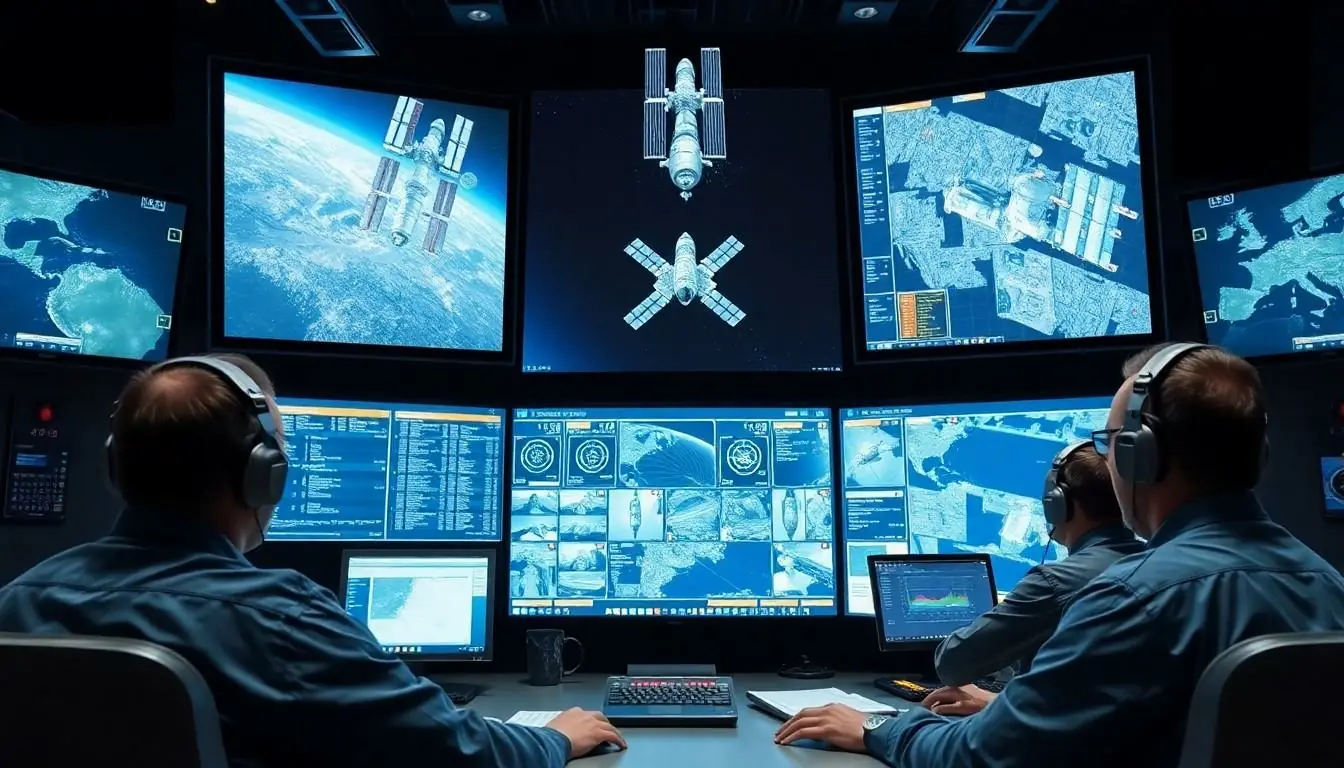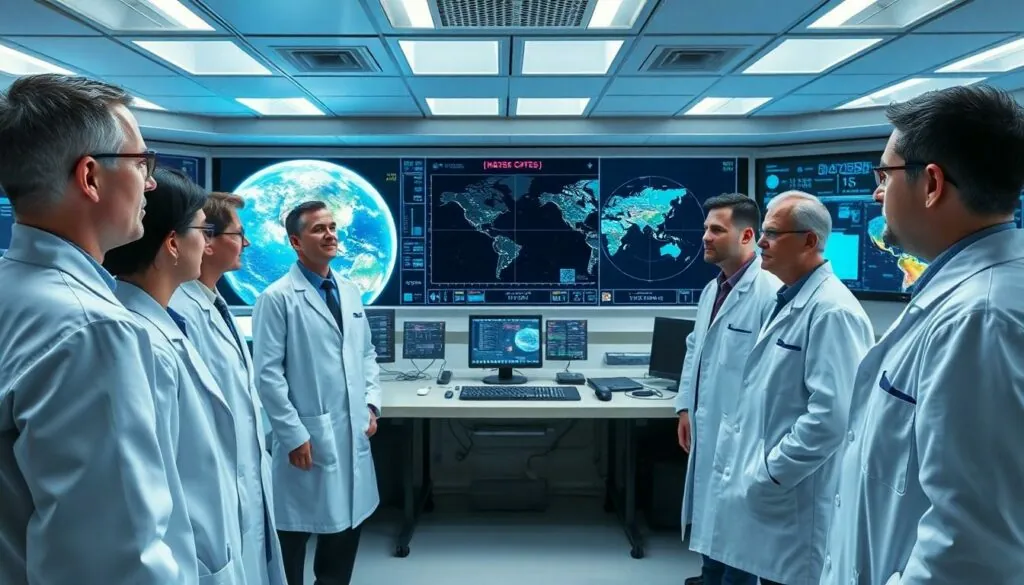Table of Contents
ToggleIn a universe where the only thing more vast than space is the potential of technology, space technology systems are the unsung heroes of our cosmic adventures. From satellites that help navigate our morning commutes to rovers exploring the Martian surface, these systems are the backbone of our interstellar ambitions. They’re not just gadgets floating in the great beyond; they’re the tools that make science fiction a reality.
Overview of Space Technology Systems
Space technology systems encompass a broad range of tools and infrastructure designed to facilitate exploration and utilization of outer space. These systems include satellites, space probes, rovers, and launch vehicles. Each element plays a significant role in gathering data, supporting communication, and enhancing navigation.
Satellites serve multiple functions, such as weather monitoring, Earth observation, and global positioning. More than 3,000 satellites orbit Earth, providing essential information that influences daily life and various industries. Communication satellites transmit signals that enable global connectivity, essential for internet access and broadcasting.
Space probes extend humanity’s reach into the farthest corners of the solar system. These unmanned crafts, like Voyager 1 and New Horizons, have traveled billions of miles and provided insights about planets and celestial bodies. Rovers, such as Perseverance on Mars, conduct on-site analyses, revealing details about extraterrestrial environments.
Launch vehicles represent the critical link between Earth and space. Rockets like SpaceX’s Falcon 9 are designed to deliver payloads into orbit efficiently. With advancements in reusable technology, costs associated with launching payloads have decreased significantly.
Ground control systems monitor and manage these missions from Earth. Such systems ensure communication and data transfer between spacecraft and mission operators, facilitating real-time decision-making. Together, these components create a comprehensive ecosystem for space exploration.
Innovations in space technology systems continue to emerge, paving the way for future missions. As scientists and engineers develop new technologies, the potential for interstellar exploration and habitation grows, making these systems integral to understanding the cosmos.
Key Components of Space Technology Systems

Space technology systems consist of several key components crucial for exploration and utilization of outer space. These components include satellites, launch vehicles, and ground control systems, each serving essential roles in advancing our understanding of the universe.
Satellites and Their Functions
Satellites orbit Earth and facilitate numerous functions. Communication satellites provide global connectivity, enabling television, internet, and voice services across vast distances. Weather satellites monitor atmospheric conditions, improving forecasting accuracy. Earth observation satellites gather data on land use, environmental changes, and natural disasters, aiding in disaster response and resource management. Furthermore, navigation satellites support the Global Positioning System (GPS), enhancing precision for transportation and mapping. Over 3,000 satellites currently orbit the planet, showcasing their paramount importance in modern life.
Launch Vehicles and Propulsion
Launch vehicles serve as the backbone for sending payloads into orbit. Rockets, such as SpaceX’s Falcon 9, deliver satellites and scientific instruments beyond Earth’s atmosphere. Innovations in reusable rocket technology have slashed launch costs and increased mission frequency. Launch vehicles utilize various propulsion systems, including liquid, solid, and hybrid fuels, optimizing performance and efficiency. Each advancement in propulsion technology enables deeper space exploration and increased payload capacities. These vehicles remain essential for ambitious missions targeting the Moon, Mars, and beyond.
Ground Control Systems
Ground control systems govern space missions from Earth. These systems include stations equipped with antennas, software, and personnel dedicated to monitoring spacecraft and ensuring mission success. Real-time communication channels facilitate data transfer, enabling instant adjustments based on mission requirements. Ground control integrates various subsystems to handle telemetry, tracking, and command. The expertise of the control teams allows for strategic decision-making during critical mission phases. Effectively coordinating these efforts maximizes the potential for scientific discovery and exploration advancements.
Innovative Technologies in Space
Innovations in space technology are vital for enhancing exploration and communication in outer space. Various advancements shape current and future missions.
Artificial Intelligence in Space Exploration
Artificial Intelligence (AI) significantly enhances data analysis during space missions. It enables robotic systems to execute tasks autonomously, reducing dependence on human operators. AI algorithms process vast amounts of data from satellites and rovers, allowing for more accurate decision-making. Notably, AI identifies patterns in planetary environments, improving research on habitability factors. Systems like NASA’s Perseverance rover utilize AI to navigate challenging terrains efficiently. With this technology, researchers gather insights that inform future exploration strategies. Furthermore, AI aids in predicting equipment failures, enhancing mission reliability and success.
Advanced Communication Systems
Advanced communication systems play a crucial role in space missions. These systems ensure seamless data transmission between spacecraft and Earth-based stations. Technologies like laser communication are revolutionizing bandwidth capabilities, allowing for higher data rates than traditional radio frequencies. For instance, the Laser Communications Relay Demonstration (LCRD) project aims to demonstrate enhanced communication performance. Satellite constellations, such as Starlink, improve global connectivity and support deep-space missions. They enable researchers to relay information and telemetry effectively during missions. Robust communication systems provide real-time feedback, crucial for decision-making and mission success.
Applications of Space Technology Systems
Space technology systems impact various sectors, providing critical applications that advance human knowledge and societal functions.
Earth Observation and Environmental Monitoring
Earth observation satellites gather data crucial for monitoring environmental changes. These satellites track climate patterns, deforestation rates, and natural disasters. Data from sensors aids in predicting weather and managing resources effectively. Additionally, satellites support agriculture by analyzing crop health, facilitating informed decisions for farmers. Ongoing monitoring of urban development through satellite imagery offers insights into city growth and infrastructure needs.
Telecommunications and Navigation
Telecommunications systems rely on satellites for global connectivity. Communication satellites enable phone calls and internet access across remote regions. Navigation systems, such as GPS, provide real-time location data, enhancing travel efficiency, and improving safety in various sectors. These technologies streamline logistics for shipping companies, ensuring timely deliveries and efficient routing. Advanced satellite constellations further augment these services, delivering quicker and more reliable connections globally.
Scientific Research and Exploration
Scientific research benefits immensely from space technology systems. Space probes and rovers explore celestial bodies, gathering data that deepens understandings of the solar system. Instruments onboard analyze atmospheric composition and surface conditions on planets. Insights from missions like Mars Curiosity and Voyager missions propel knowledge about habitability and planetary evolution. Moreover, collaboration with international space agencies fosters shared progress, enhancing discoveries in astrobiology, geology, and climate science.
Challenges and Future Trends
Challenges in space technology systems include technological limitations that hinder advancements. The systems depend on robust data transmission capabilities, which can suffer from latency and bandwidth issues. Solutions involve implementing advanced communication technologies, such as laser communications, which enhance data rates significantly. Another limitation lies in the durability of spacecraft components. Innovations in materials science, like the use of nanomaterials, show promise for increasing resilience against harsh space environments. Each solution pushes boundaries further, contributing to more reliable missions.
International collaboration plays a critical role in overcoming challenges in space technology systems. Agencies from various countries work together on significant projects, pooling resources, expertise, and knowledge. This collaboration allows for shared data and collective problem-solving, accelerating the pace of innovation. For instance, the International Space Station exemplifies how joint efforts from space agencies can lead to groundbreaking scientific research. Partnerships with academic institutions also foster a culture of innovation, helping develop next-generation technologies needed for future exploration missions. Such cooperation enhances efficiency and effectiveness in tackling the complexities of space exploration.
Space technology systems are pivotal in shaping humanity’s understanding of the universe. They not only enable exploration but also enhance everyday life through advanced communication and navigation. As innovations continue to emerge these systems will play an even more significant role in future missions.
The integration of AI and advanced communication technologies promises to revolutionize how data is analyzed and transmitted. Collaborative efforts among international space agencies will further accelerate progress addressing challenges and expanding the frontiers of exploration. The future of space technology holds immense potential unlocking mysteries beyond our planet and paving the way for new discoveries.







